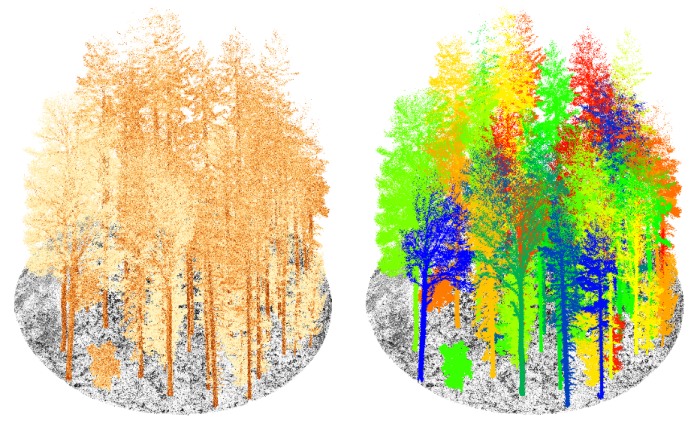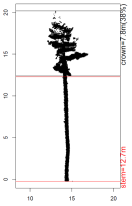Forest Inventory with Personal Laser Scanning
SUPERVISOR: Arne NOTHDURFT
PROJECT ASSIGNED TO: Andreas TOCKNER
A precise knowledge about the quantity and quality of the growing stock in forests is crucial for an optimal utilization of the renewable material wood. However, in nowadays’ forest inventory practice, trees are still measured with traditional manual instruments, such as calipers, relascopes or electronic clinometers. This is time-consuming and does no longer fulfill the information needs postulated by the stakeholders along the forest/wood value-added chain in a modern digital world. This is because only a small set of linear measures is usually obtained by the traditional measurements, e.g., in terms of the diameter at breast height, the tree height, and the crown-base height. However, trees and their most relevant woody part – the stem – possess a complex structure and are characterized by many more attributes beyond their lateral and vertical dimension.
In recent years, laser scanning technology was introduced as means to register the complete structure of single trees and entire forest stands in form of 3D point clouds. Especially with portable laser scanners, labor costs can be significantly reduced. The major challenge nowadays is to develop software routines for the automatic feature extraction from the 3D laser scanning point clouds. Hence, the major goal of my project is to build a methodological framework of precise and accurate computer algorithms for the automatic tree localization, stem-profile measurement, crown segmentation, wood-damage recognition, and species classification. My methodology will contribute to maximize the material yield and the economic profit from sustainable forestry and the wood processing industry.

Figure 1: Digital twin of a sample forest plot, extracted trees are colorized

Figure 2: Height measurements and crown base detection for a pine tree
